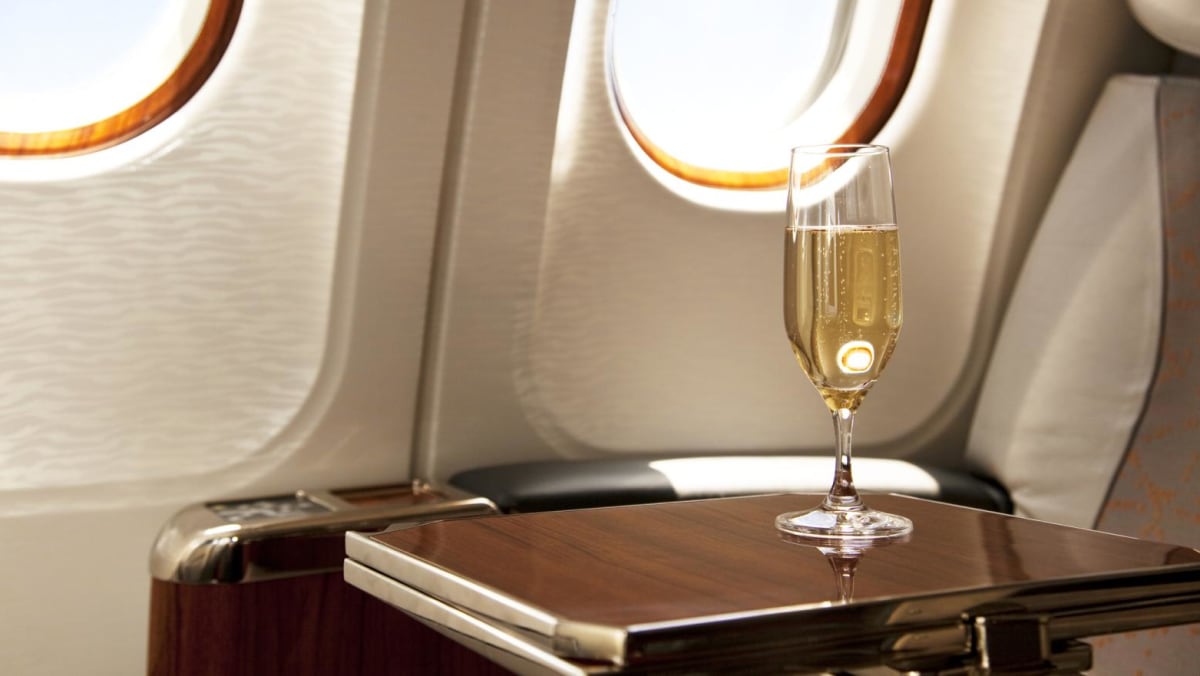Qatar Airways’ newly appointed master of wine, Anne Krebiehl, is a champagne specialist. She argues the case for drinking it at altitude, backed by flavour science. “At 35,000ft, our senses are dulled due to cabin pressure and the relative dryness of the air, but our perception of umami is not affected,” she says. “And you find a lot of umami in long-aged wines like Krug or Charles Heidsieck Brut Reserve, which contains a lot of reserve wines. The bubbles also help to carry aroma straight to your olfactory receptors and stimulate the trigeminal nerve, a super-highway of sensory perception that is not at all affected by altitude, dryness or white noise.”
A gold-medal winner at the recent Cellars in the Sky Awards, Qatar Airways offers white and rose champagne in first and business. “In first we are currently serving Krug, with its exquisite savouriness, and Bollinger La Grande Annee Rose, a pinot-led cuvee with a lush velvetiness,” says Krebiehl. “In business it’s often Heidsieck Brut Reserve, which I am a huge devotee of – it has such depth.”
Air France prides itself on offering champagne to passengers in every class. The airline’s new head sommelier Xavier Thuizat – who is also head sommelier at Paris’s Hotel de Crillon – tells me they get through more than one million bottles of champagne a year. As part of its £7 billion (US$9.25 billion; S$12.07 billion) upgrade, British Airways has doubled down on English sparkling wine. Prestige cuvees available in first class over the coming months will include Nyetimber’s 1086 rose and Gusbourne’s Fifty One Degrees North, plus a new sparkler from Dermot Sugrue, a cult-ish winemaker in the South Downs. On the champagne front, BA has also reinstated the excellent Laurent-Perrier Grand Siecle.
